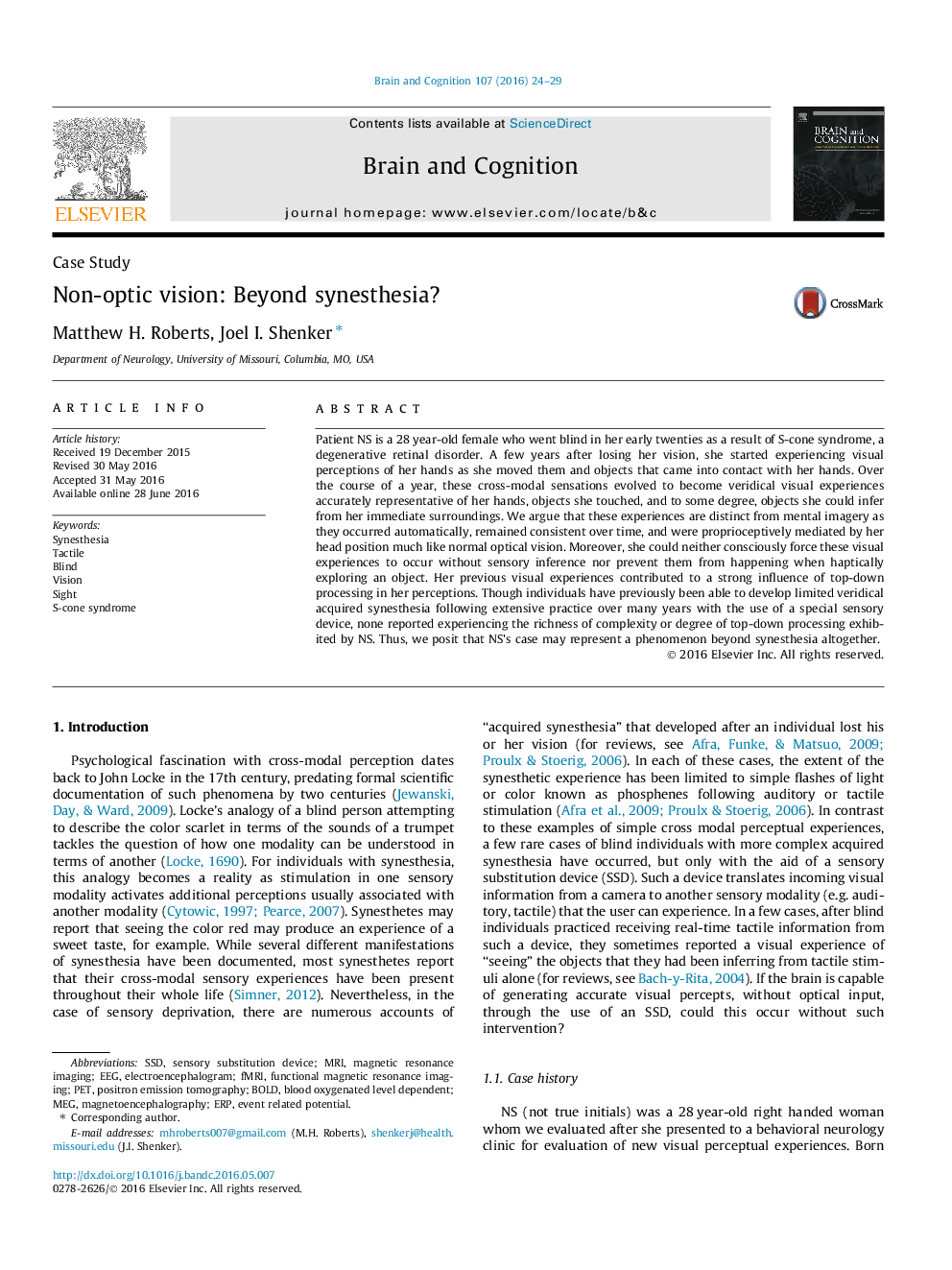| کد مقاله | کد نشریه | سال انتشار | مقاله انگلیسی | نسخه تمام متن |
|---|---|---|---|---|
| 924039 | 1473964 | 2016 | 6 صفحه PDF | دانلود رایگان |
• NS is a blind patient that forms veridical visual percepts from non-optic senses.
• Her visual phenomena are spontaneous, automatic, and proprioceptively mediated.
• Thus her visual experiences are distinct from mental imagery.
• This is the first case of its kind in the literature.
Patient NS is a 28 year-old female who went blind in her early twenties as a result of S-cone syndrome, a degenerative retinal disorder. A few years after losing her vision, she started experiencing visual perceptions of her hands as she moved them and objects that came into contact with her hands. Over the course of a year, these cross-modal sensations evolved to become veridical visual experiences accurately representative of her hands, objects she touched, and to some degree, objects she could infer from her immediate surroundings. We argue that these experiences are distinct from mental imagery as they occurred automatically, remained consistent over time, and were proprioceptively mediated by her head position much like normal optical vision. Moreover, she could neither consciously force these visual experiences to occur without sensory inference nor prevent them from happening when haptically exploring an object. Her previous visual experiences contributed to a strong influence of top-down processing in her perceptions. Though individuals have previously been able to develop limited veridical acquired synesthesia following extensive practice over many years with the use of a special sensory device, none reported experiencing the richness of complexity or degree of top-down processing exhibited by NS. Thus, we posit that NS’s case may represent a phenomenon beyond synesthesia altogether.
Journal: Brain and Cognition - Volume 107, August 2016, Pages 24–29
